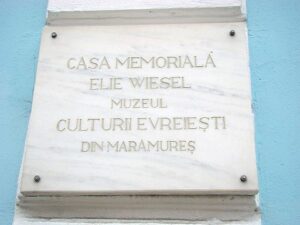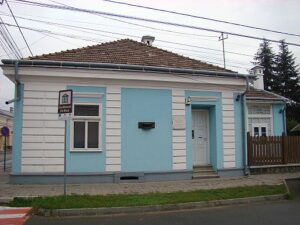Victoria Nesfield
The last few decades have seen an explosion in Holocaust consciousness across the world, but particularly in Europe and North America. In Europe especially, how the Holocaust is publicly remembered is inextricably bound to the country’s wartime record, treatment of their Jewish population, and post-war identity. Few countries in Europe have an identity as complex as Romania’s.
Territorial gains made in 1918 brought Transylvania under Romanian authority, and with it, a significant number of Jewish Hungarians. Culturally and religiously the Romanian Orthodox Church dominated and proved itself necessarily malleable to the changing political leadership and dictatorships that the interwar and early war years of the 1930s and 40s brought. Little has been published in English on the Orthodox Church’s attitudes and behaviour around the time of the Holocaust, however emerging academic research in this area points to a hostile attitude to the Jews at the highest level, one which waxed and waned in line with the political mood of the moment as the Church fought to maintain its authority and privilege. Interreligious fellowship when the Jewish community needed it most was simply not on the Orthodox Church’s agenda.
The annexing of Northern Transylvania to Hungary in 1940, and the still shifting political alliances in Romania throughout the war meant that while after 1942 many Romanian Jews were narrowly spared deportation to Nazi death camps, Transylvania’s Jewish population was all but annihilated, as Nazi-occupied Hungary carried out the largest single deportation of Jews throughout the Holocaust in 1944. 440,000 Jews were deported to Auschwitz-Birkenau in under three months, among them, Elie Wiesel, his family, and the entire Jewish community of Sighet.
The end of the war brought with it a Transylvania restored to Romania but also a new ideology in Communism. Once again, the Romanian Orthodox Church was forced to restate its allegiances, and both Church and State’s complicity in the Holocaust was largely ignored as decades of Communist oppression, and following this the post-revolution road to recovery, took priority.
My research looks at how Holocaust memory competes with Communist memory for a place in public discourse and education in Romania, and how this is complicated by shifting political narratives. Transitioning from Fascist, to Communist dictatorships, to democracy, the one consistent dominating institution throughout has been the Romanian Orthodox Church. The Church’s refusal to publicly contemplate its part in the Holocaust further complicates the issue, remaining as it does, such an influential structure in a country whose population have grappled with so many political changes and hardships over the last century.

I am using as my case study the town of Sighet in Northern Transylvania. Memorialised by Wiesel as a “small European Jerusalem” and from which he and his family left, most never to return, Sighet acquired a new notoriety under the Communist regime, as the home of one of the country’s most brutal prisons for opponents of the regime.

In 1997 the Prison opened as a museum and memorial to its victims. This was followed in 2004 by a rare visit to the town from the now high-profile survivor Wiesel, to open his former home as memorial and museum to the murdered Jews of the region. The Wiesel Memorial House, virtually in the shadow of the Communist museum in the town, receives a fraction of the number of visitors, despite the weight of Wiesel’s name and legacy. I am interested in exploring through this town and its complex history, how Holocaust memory remains in the shadow of Communist memory and what progress is being made to finally recognise the history and legacy of Romania’s Jewish community.